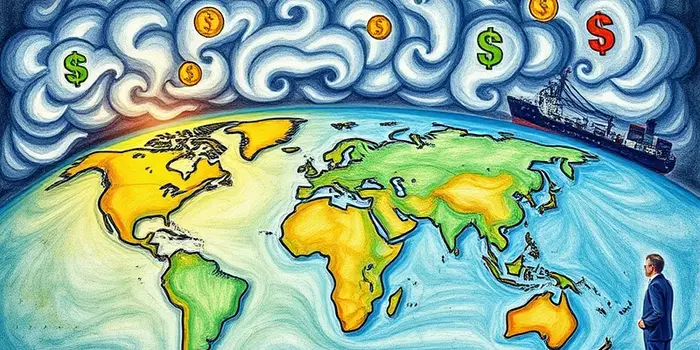
In a world increasingly shaped by conflicts, elections, and economic nationalism, investors face a constant battle to protect and grow their wealth. Understanding how global events ripple through markets is key to crafting a portfolio that can weather storms and seize opportunities.
The past two years have delivered a mix of relief and caution. US economic growth has held steady at three percent annually since mid-2023, while inflation eased from nearly nine percent to around 2.5 percent today. Corporate profits remain robust, with earnings growth for 2025 forecast at roughly 15 percent. Yet central banks in the US and Western Europe have signaled that rate cuts may be more measured than once hoped.
Looking further ahead, long-term prospects hinge on structural trends. Asia-Pacific economies are poised to drive global expansion, while advanced markets navigate aging populations and shifting energy models. Investors must balance optimism about growth with a keen eye on policy shifts and supply-chain vulnerabilities.
Certain flashpoints disproportionately unsettle markets, elevating volatility and triggering broad sell-offs. Key risk categories include:
According to one survey, 55 percent of investors rank US political uncertainty as the top threat to global markets, with regional breakdowns showing 60 percent of Asian and 59 percent of North American investors in agreement.
When geopolitical events unfold, markets react swiftly. In the immediate aftermath, investors often rush for safe havens, pushing bond yields down in advanced economies but up in emerging markets.
Energy and food supply disruptions further stoke persistent inflation above pre-pandemic norms, while logistical snarls amplify price swings. Investors in emerging markets feel the sting most acutely, with borrowing costs often rising four times more than in developed economies.
To navigate these crosswinds, successful investors focus on adaptability and diversity. Key strategies include:
Nearly 90 percent of global investors believe that private assets will deliver long-term outperformance, driven by lower correlation with equity markets and the ability to lock in yields in rising-rate environments.
Geopolitical shocks manifest differently around the world. In the US, election years often bring pro-incumbent policy boosts to markets, but also risk swings tied to tax and regulatory agendas. In Europe, the Russia-Ukraine war and energy dependency continue to shape policy and market sentiment.
Asia-Pacific investors are focused on securing critical minerals, managing US-China relations, and accelerating decarbonization efforts. In contrast, emerging markets wrestle with the greatest immediate fallout, as currency and bond markets tighten sharply amid global risk aversion.
Despite the risks, geopolitical turmoil can create windows for strategic entry. Sharp sell-offs often reveal attractive valuations in quality companies, and disruptions in certain industries may accelerate long-term themes like energy transition and digital security.
Opportunistic investors deploy capital during downturns—buying undervalued assets or increasing allocations to resilient alternatives. While timing is challenging, disciplined approaches that combine fundamental analysis with clear risk limits tend to outperform chase-the-market tactics.
Behavioral discipline is crucial. Emotions run high during crises, but a well-defined process helps avoid rash decisions. Maintaining regular portfolio reviews, stress-testing allocations for worst-case scenarios, and setting predefined rebalancing triggers can transform anxiety into action.
In the end, geopolitical jitters are neither a passing fad nor a purely negative force. They are forces of change that reshape global trade, policy, and technology. Investors who embrace long-term structural shifts in global growth—and who build portfolios around resilience, diversification, and disciplined opportunism—can thrive amid uncertainty and protect their wealth against the next seismic event.
By understanding the drivers, integrating robust risk controls, and remaining steadfast in the face of turmoil, you can turn global unrest into a catalyst for portfolio innovation and growth.
References













